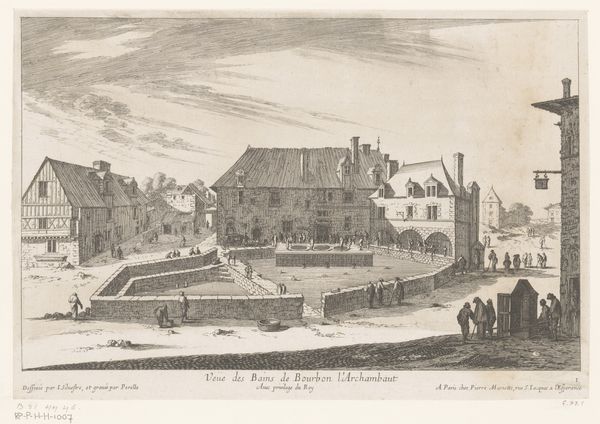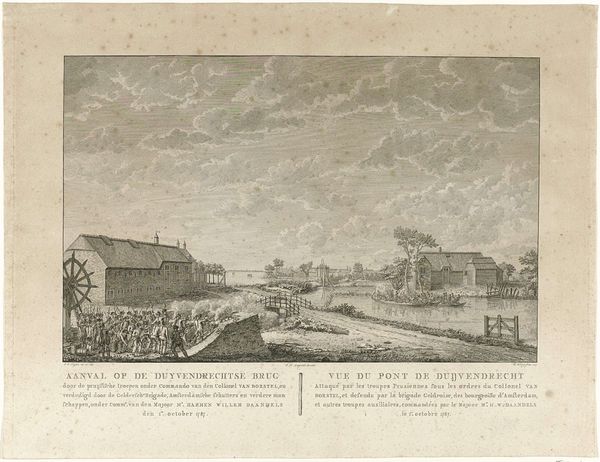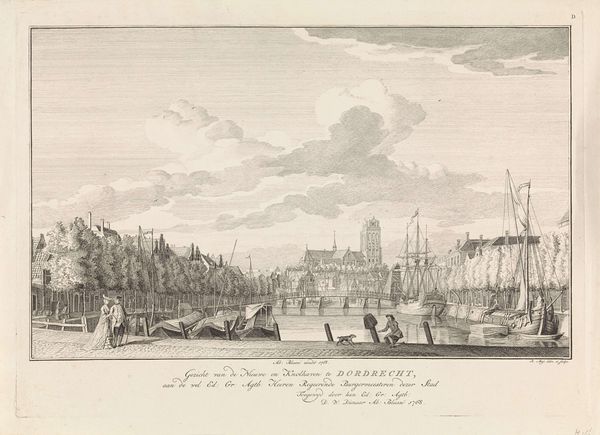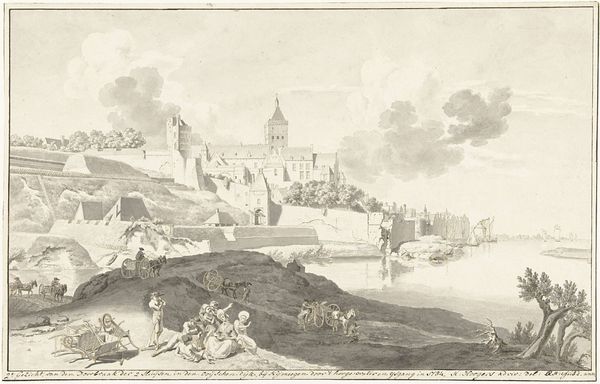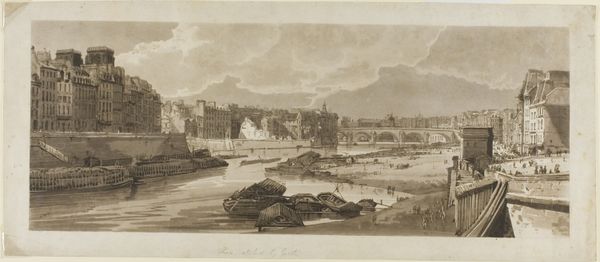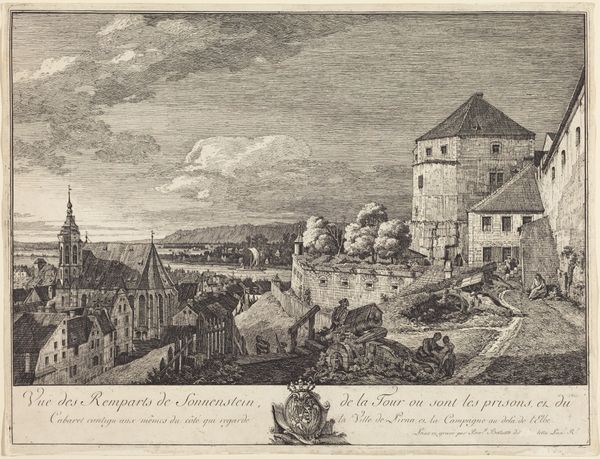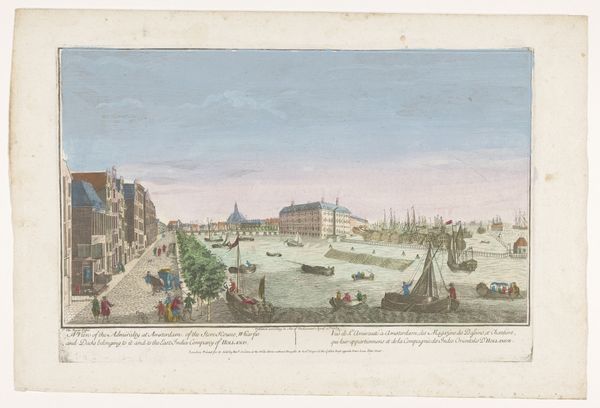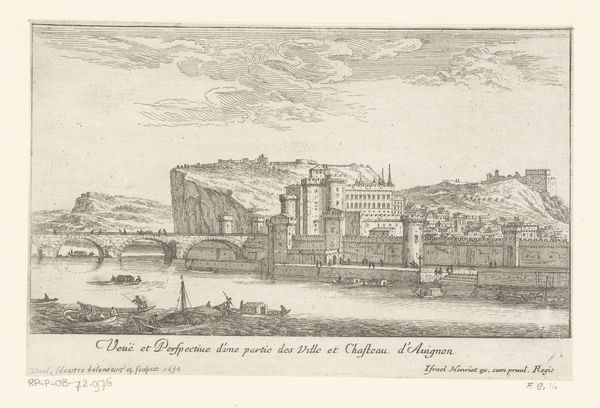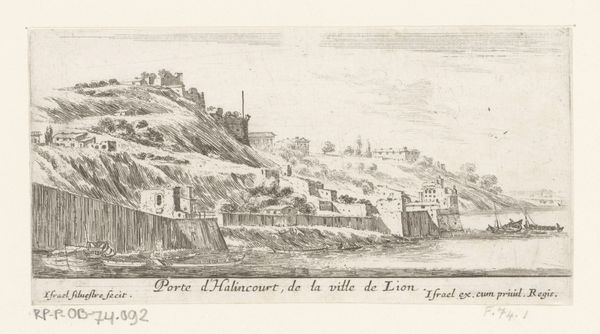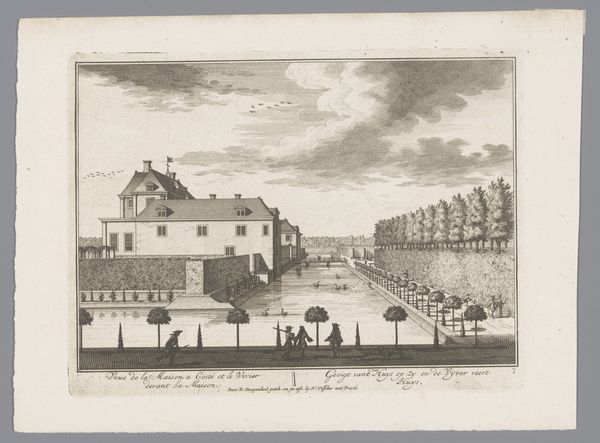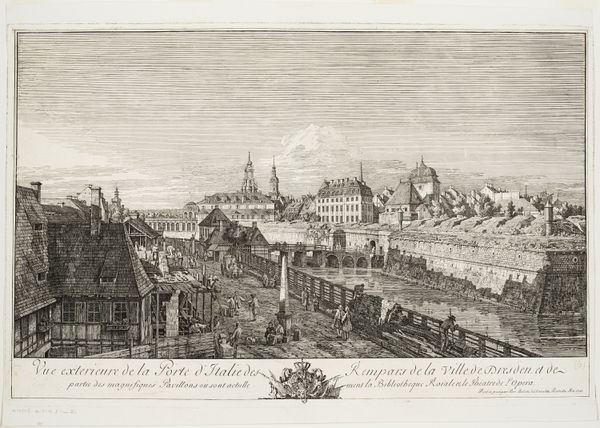
print, watercolor
#
dutch-golden-age
# print
#
landscape
#
watercolor
#
romanticism
#
cityscape
#
watercolour illustration
#
watercolor
Dimensions: height 330 mm, width 510 mm
Copyright: Rijks Museum: Open Domain
Curator: Here we have Jacob Plügger's "Ruïne van het Oost-Indisch Zeemagazijn, 1822," a watercolor and print held at the Rijksmuseum. Editor: It's really quite evocative. A serene cityscape shattered by, presumably, the collapse of that massive warehouse. There's a real sense of fragility against industry here. Curator: Indeed. Plügger captures a moment of disruption, but also reveals aspects of Dutch society through it. The Oost-Indisch Zeemagazijn was hugely important for the Dutch East India Company. Editor: A key infrastructure of colonial trade. Seeing it like this really hammers home the instability inherent in that whole system. Look at the way the wooden supports splinter and the canvases rip. You can almost hear the groan of the building giving way. What was stored there that made it buckle this way? Curator: Well, these warehouses stored vast quantities of spices, textiles, and other goods plundered from the East Indies, before distribution across Europe. Plügger is reflecting a specific moment in time, where Amsterdam was reckoning with economic shifts and even natural disasters that reveal broader instabilities in its dominance. Editor: The fact that he rendered this devastation in watercolour seems pertinent too. Water itself has a symbolic power as a destructive force, always threatening to engulf, erase. Look at how still the water is around the collapse. Curator: Absolutely, and consider the romantic lens through which this ruin is being viewed. It allows Plügger to highlight both the power and the vulnerability of the Dutch colonial machine at this moment. And it lets the public participate in understanding the temporality of such immense infrastructure and power. Editor: And the laborers. Who were these figures depicted navigating by boat to examine this fallen titan? Were they merely observers, or were they involved in dismantling it to make way for something new? One wonders if the use of watercolor also hints to the impermanence of wealth built on colonialism. Curator: A key question that lingers beyond the immediate depiction of architectural ruins. What is truly stable, permanent? Plügger invites that consideration. Editor: Indeed, the piece as a whole seems to ask that of us even today. Thank you.
Comments
No comments
Be the first to comment and join the conversation on the ultimate creative platform.


